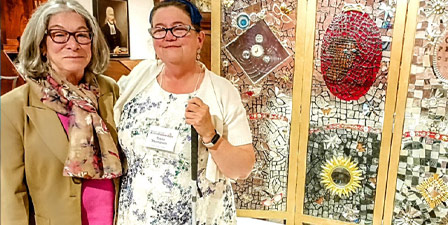 Dear Fabulous Readers,
Dear Fabulous Readers,
Let me introduce you to an amazing talent: Luke A. Mills. Luke was one of my opticianry students, but his knowledge of frame shape and design far surpassed what I could teach him. I hope his story inspires you as it does me.
–Laurie Pierce, ABOM
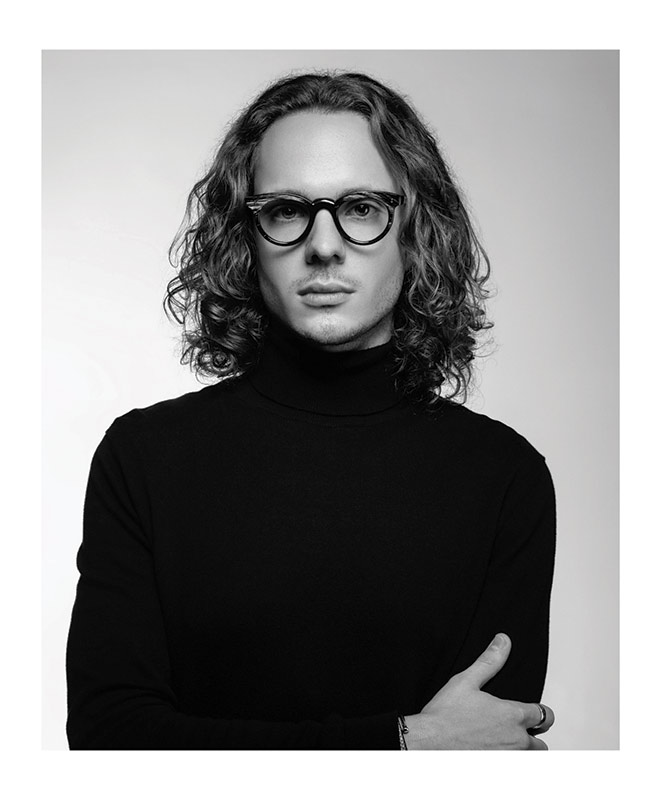
Ms. Specs: You are gaining momentum and recognition for your beautiful bespoke pieces. When did you start designing and crafting frames, and how did you learn this unique skill?
Luke A. Mills: As a child I always made things and worked with my hands. My mother is a professional draftsman, moralist and painter, while my father was an engineer, carpenter and all-around renaissance man. Art and craft were always supported and encouraged. We had a large detached garage that was converted into a workshop, where my father and YouTube taught me the basics in silversmithing. The first functional pieces I made were handcrafted silver rings. One day my father handed me a copy of Garden and Gun, and pointed out an article on Wesley Knight, a bespoke frame designer and maker working in buffalo horn. Following my father’s advice and newfound interest in bespoke eyewear, I reached out to Wesley about an apprenticeship. The apprenticeship never happened, but interest in crafting eyewear was just beginning. I requested apprenticeships and guidance from about 20 makers/designers/manufacturers, but not one accepted. The rejections poured fuel on the fire to learn. What magical crafting secrets could they be hiding? Because my mother was a draftsman and my father a carpenter, knowledge and tools were at my disposal. The first frames I created were from pieces of scrap wood and were frames “only a mother could love,” which she did! It was several years and many ugly frames before I made one that I could proudly sell, around 2017. Unfortunately, my father passed away before I was able to make/sell a functional frame, but I am forever grateful for his support and constant push in pursuing craft.
I recall you sharing a story about, how as a child, you gained an interest in vintage eyewear and started a business refurbishing and selling them. Please tell us about that.
I realized I had an interest in eyewear when I coveted my brother’s thrift store pair of 1960s black B&L Ray-Ban Wayfarers. I thought my older brother was cool, and I wanted to be like him. After several thrift store adventures, I scored a pair of Ray-Ban Wayfarers in amber. I was now cool. Shortly after, my family was severely impacted by the recession/housing bubble crash in 2007/2008; I was 12 years old. Although most aspects of my life changed, there were two that I couldn’t let go of, competitive swimming and private school. I tried several things to raise money for them, but nothing caught on. My mother had an eBay account to sell her thrift store treasures, and I figured I’d see how much I could get for my Wayfarers. To my surprise I sold them for nearly $200, and the light bulb went on! I convinced my mother to take me to thrift stores, yard sales, estate sales, antique stores, etc. I bought any frame that looked old or interesting within my budget. I researched my finds before listing them to ensure I made the most from each sale. At first, I sold the frames with the Rx lenses in them, but after watching YouTube videos on how to remove lenses, I cleaned the frames to make them more appealing. I researched EVERYTHING eyewear, the 20th century manufacturers, their histories, materials, colors, models and sizes. I became consumed with vintage eyewear. I realized that the frames selling for the highest prices were polished and sparkly, so I researched the types of plastics used and how to properly restore the materials. At 15, I bought out several optical shops’ old stock inventory and had thousands of frames to pick from and sell to pay bills. What was first a means of surviving, grew into a life altering passion.
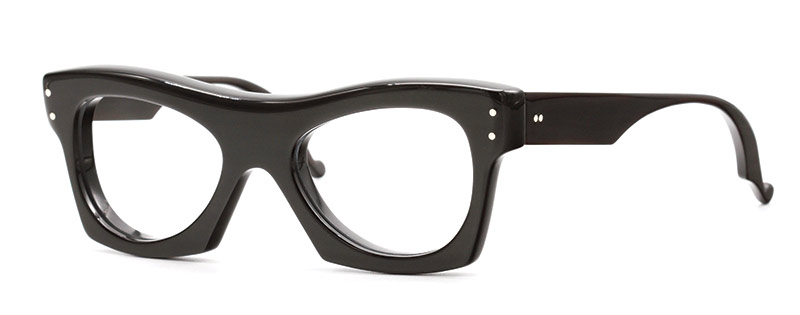
All designs and frames present unique challenges, especially when working with buffalo horn. Buffalo horn shows mercy to no craftsman, but the “Here Today Gone Tomorrow” frame was the most challenging. It was a unique design, inspired by 18th century Venetian spectacles. The front was simple, but each temple had six hand carved pinwheels in opposite directions, which were difficult to craft. I chose blonde buffalo horn, which splinters easily and must be hydrated with oils between each step. Describing the complexity of the frame is difficult. It’s not until you see the frames in person that you truly get a sense of the craftsmanship. I estimated the frames would take 30 hours to craft, but when completed, I had over 100 hours on that single project.
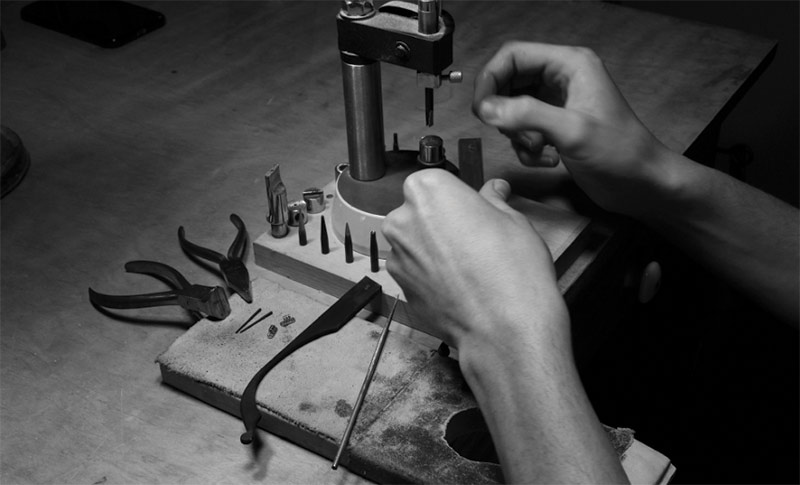
Are you creating frames from raw materials now? If so, what are they?
One of the most important missions of LA Mills Eyewear is supporting the environment. Mass production of any kind wreaks havoc on the environment and in turn our lives. Using raw materials such as buffalo horn and traditional hands-on techniques, dramatically reduces the carbon footprint of making a frame. The primary material I use is buffalo horn, which is a natural keratin-based polymer. It’s hypoallergenic, lightweight, eco-friendly and comes in many color variations.
Are you sourcing horn?
Horn can be sourced domestically, mainly from local farms, but the downside is that the horn almost always comes in its raw cylindrical shape, which creates more work for the craftsman. As a solution, many craftsmen source their horn from India. Indian water buffalo horn comes flattened, with consistent thickness, ready to be cut and in many colors. The downside to sourcing materials from India is taking support out of the U.S. Buying horn domestically creates more work, but I get better range and manipulation of color, while supporting our local economy. I order horn from India as a backup and main supply for orders that don’t require special colors. I also use it for thick frames, which are very popular at the moment.
Do you have private customers?
The majority of my clientele comes from Bespoke Consultations, in which confidentiality is held to their respects. My clients usually are very private regarding sharing their bespoke frames. They don’t want their pictures posted on my social media. I understand, but at the same time I’d love
to show off how amazing their frames look!
Are you selling to optical retailers?
I sell to shops on a wholesale basis with a three-piece minimum buy-in. My products and bespoke services are currently represented in two Florida optical shops. I love having my ready-to-wear frames displayed and sold there because it allows patients to physically understand the difference in quality of handcrafted frames. I look forward to opening more accounts in the future!
You were featured in GQ magazine in the U.K. How did that transpire, and how did you feel? A sales director for Conde Nast reached out via my website, offering an advertising slot in 2022 U.K. GQ. The email stated they found my brand through Instagram, and it “would be a perfect fit” for GQ. After many spam social media and advertising offerings, I assumed this was another, but it looked legitimate. And it was! My immediate and most powerful feeling was “imposter syndrome.” I didn’t understand why my craft and product were selected, and felt my products weren’t good enough to be featured in GQ. Then I allowed myself to be proud of my growth and progress.
What advice can you give to an up-and coming frame designer?
The best kept secret in the world of craft is patience. You will make mistakes but accepting mistakes with patience and grace takes strength. I have never been a patient person, but I believe my growth in patience is reflected by the growth in my craft.
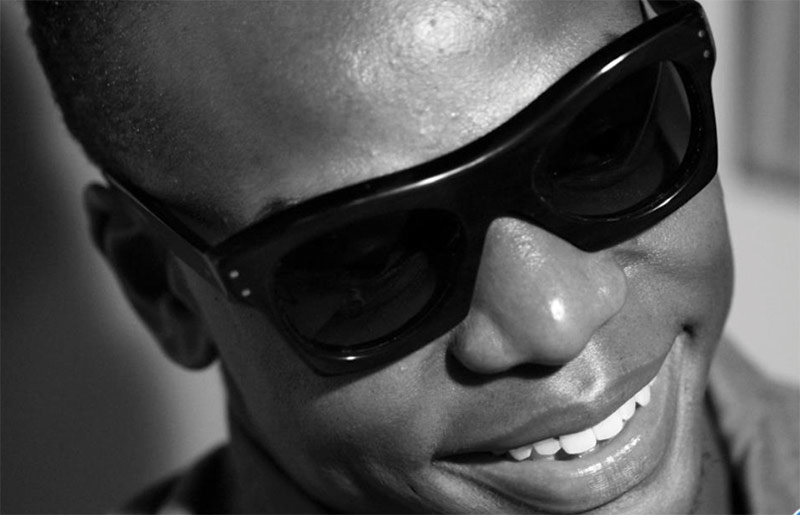
How can we learn more about your offerings?
Bespoke frames are unique, measured, designed and crafted with an infusion of the clients personality, style and desires. I use the term handcrafted, which infers a superior level of craft and human touch. A craftsman should be judged by their crafting technique, level of consistency and knowledge of the materials used, without the aid of computerized technology. I don’t use CAD or CNC and phased out using synthetic materials. Each LA Mills frame is 100 percent designed and crafted by hand and goes through rigorous tests to ensure durability. I’m proud of my attention to detail in the material used for each frame. Buffalo horn must be properly hydrated. I have done years of tinkering and experimenting to find the best oils to soak it in each stage of production, to ensure it maintains luster, shine and longevity. My passion to find the best oils and production process was inspired by my collecting and restoring days. I noticed that pieces from the 1700s look better and are more hydrated than pieces from the 1970s to 2000. This forced me to find out which oils and techniques were used to maximize the frames’ longevity. My pursuit of the best hydration is a constant learning process. I would love to share my creations and work with anyone who is interested! I post my creations on the following platforms: lamillseyewear.com, Instagram @lamillseyewear and facebook.com/lamillseyewear.
Do you have a question for Ms. Specs? Please send your question to [email protected], and we may feature it in a future column.




